 Facebook
Facebook
 X
X
 Instagram
Instagram
 TikTok
TikTok
 Youtube
Youtube
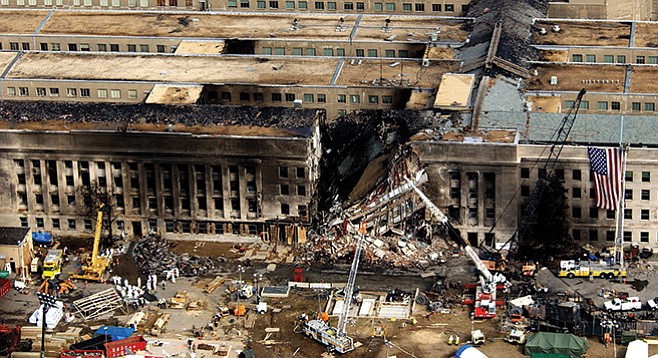
Nearly 15 years after the 9/11 attacks, questions linger about a San Diego man’s ties to two Al-Qaeda terrorists he helped settle in Clairemont as his neighbors who went on to crash a hijacked plane into the Pentagon.
Omar al-Bayoumi met Nawaf al-Hazmi and Khalid al-Mihdhar under dubious circumstances in a Los Angeles restaurant. Three days later he helped them move into his apartment complex, though he later insisted they were strangers. Bayoumi, married with four children, did not work, yet he seemed not to want for money. He was 42 at the time and claimed to be a student. However, nobody knew where he went to school, and he always seemed to be hanging around the Islamic Center of San Diego on Balboa Avenue, next to the 805 freeway.
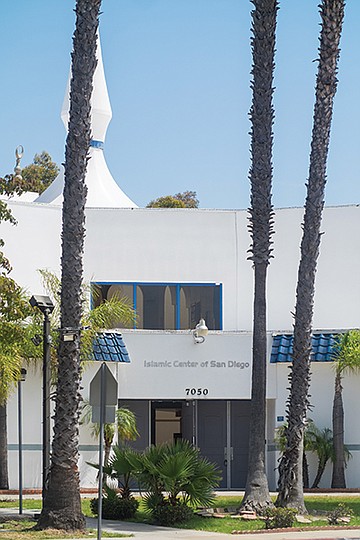
Bayoumi usually walked around with a video camera, recording people at the mosque and cultural events. Long before the attacks, local Muslims suspected Bayoumi was a Saudi spy who kept tabs on Saudis living in San Diego; a belief buttressed when his wallet with Saudi government credentials was found in the mosque’s sanctuary. His frequent contacts with the Saudi embassy in Washington and consulate in Los Angeles were also well known.
After the attacks, FBI agents had their own suspicion about Bayoumi: was he an advance man for Hazmi and Mihdhar? So, who is Bayoumi and what was his role in the September 11, 2001, attacks? These questions remain unanswered. The release of the so-called 28 pages by Congress on July 15 offer new tidbits about him that only add to the mystery.
He lived in San Diego on and off for about seven years before moving to England one month before the attacks and now lives in Saudi Arabia.
The newly released document makes up a chapter missing from the 838-page report issued in 2002 by the joint congressional inquiry into intelligence failures leading up to the attacks. The inquiry’s task was to gather information and was not an investigation. President George W. Bush ordered the pages classified on national security grounds. President Obama authorized their release.
Bush’s decision to keep the document secret fueled speculation about Saudi government involvement in the terrorist attacks. However, while it mentions the “substantial assistance” that Bayoumi gave to the hijackers, the pages contain no smoking gun. Follow-up investigations by the FBI and 9/11 Commission were unable to prove that the Saudi government or Saudi citizens named in the document had advanced knowledge of or knowingly assisted the hijackers. Fifteen of the 19 terrorists were Saudis.
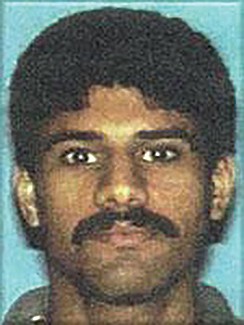
Still, investigators uncovered several disturbing coincidences that leave skeptics wondering what the Saudis, including Bayoumi, knew. One 9/11 Commission member called the coincidences “an incredible series of circumstances” that, among other things, allowed Hazmi and Mihdhar to live here unobtrusively. Bayoumi’s association with Hazmi and Mihdhar has been analyzed extensively and remains hotly debated.
Chapter V in the 9/11 Review Commission report notes there is “ongoing internal debate within the FBI” over whether Bayoumi and others gave witting assistance to the hijackers. The review commission was created by Congress to check the FBI’s progress instituting the recommendations of the 9/11 Commission.
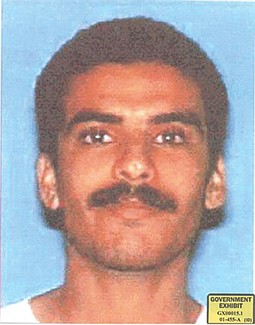
Officially, the 9/11 Commission and FBI concluded that the hijackers did not have a support network in the U.S. and any support given to them was unwitting. Both agencies concluded that Bayoumi did not knowingly assist the terrorists. If this is true, then his ties to Hazmi and Mihdhar are intertwined in a series of compelling coincidences.
“The documentary evidence that Bayoumi provided assistance to Hazmi and Mihdhar is solid,” said the declassified document. It notes that he had “far more extensive ties to the Saudi government than previously realized.” The document reported almost 100 phone calls from Bayoumi to Saudi government offices in the U.S. between January (when Hazmi and Mihdhar arrived in Los Angeles) and May 2000.
Before the terrorists arrived here, Bayoumi was getting $465 in monthly Saudi government allowances. In March 2000, one month after Hazmi and Mihdhar moved to Clairemont, his monthly stipend increased to $3700 and remained so until reduced to $3200 in December 2000, when Hazmi left San Diego. Federal investigators suspected that the increase in Bayoumi’s government allowance was intended to assist Hazmi and Mihdhar, but this suspicion was never proven.
Much of what was learned about the attacks was uncovered in San Diego. San Diego County sheriff Bill Gore, head of the local FBI office during 9/11, said, “We know more about [Hazmi and Mihdhar] in San Diego and what they did and where they went from the time they came into the U.S. to the time they flew into the Pentagon than any other hijackers.” But he also added “some things we’ll never know the answer to; one of them being Bayoumi.”
Former Senator Bob Graham (D-FL), co-chair of the joint congressional inquiry, said San Diego provided “the blood sample of 9/11.” “In our understanding of 9/11, San Diego was absolutely critical because we were able to gather so much information there. It was almost analogous to having a physical exam and they draw blood and use a small amount of that fluid to be properly analyzed,” said Graham in a telephone interview.
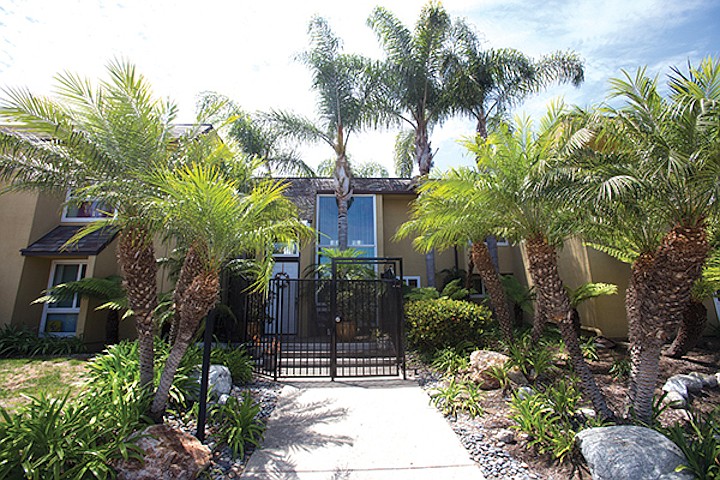
Bayoumi met Hazmi and Mihdhar on February 1, 2000. He claimed it was a random encounter at the Mediterranean Gourmet restaurant on Venice Boulevard in Los Angeles, and then he invited them to move to San Diego. On February 4 he was helping them apply for an apartment that was one door down from his at the Parkwood Apartments, off Balboa Avenue and a block west of the Islamic Center. Bayoumi told FBI agents in an August 2003 interview in Saudi Arabia that Hazmi and Mihdhar were the only ones he ever helped find an apartment.
The terrorists moved in without furniture. Because they did not have a credit history, Bayoumi co-signed for them and they were allowed to list his address as a previous residence. Bayoumi also helped them open a checking account and drew a cashier’s check for $1500 at a Bank of America on Balboa Avenue in his name to cover their first month’s rent; Bayoumi was promptly reimbursed.
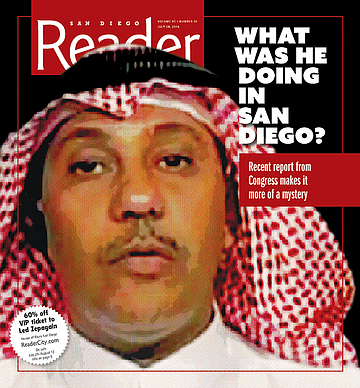
On February 9, five days after the duo moved into the apartment, and again on February 14, Bayoumi’s cell phone was used to call the landlord of an apartment complex on 49th Street, off El Cajon Boulevard. On February 15 the landlord returned a page from Bayoumi’s phone and Hazmi answered. The terrorists complained that rent at the Parkwood was too high. They were looking for a cheaper place to live. (The Parkwood Apartments, at 6401 Mount Ada Road, have since been converted to condominiums and the complex given a new name.)
Graham said congressional investigators were lucky to learn about Bayoumi and the two hijackers before the Bush administration put a lid on the information. “And relative to the situation in San Diego, it was just our good fortune to get there before the cover-up [was] put in place,” said Graham, referring to the sealing of the 28 pages. When asked who ordered the cover-up, he said, “I think it came from the White House.”
Graham is skeptical of U.S. claims that there was no involvement by Saudi government officials in the attacks and that any help that Hazmi and Mihdhar received from local Muslims was unwitting. He told 60 Minutes he believes the terrorists received a substantial amount of support from a Saudi network, including in San Diego. However, the FBI has been unable to find any co-conspirators despite a nearly 15-year-long investigation.
In the telephone interview, Graham said the hijackers could not have succeeded without support from within the U.S. “I think it is highly implausible that these 19 people, most of whom didn’t speak English, had never been in the United States before, weren’t well educated, [alone] could have turned out such a sophisticated plot,” he said.
In one of the many contradictory findings in the investigations, the 9/11 Commission reached the same conclusion. The commission’s report said it was unlikely that Hazmi and Mihdhar “would have come to the U.S. without arranging to receive assistance from one or more individuals informed in advance of their arrival.” But the commission ultimately said investigators found no evidence the terrorists had willing accomplices while in San Diego. Mihdhar lived here four months and Hazmi ten.
Gore said FBI agents began the investigation on the supposition that the terrorists had a local cell supporting them. “That was the whole point of our investigation to see if that network existed. I didn’t see one crucial piece of aid or support that they got here in San Diego that they couldn’t have gotten some other way to further their plan,” he said.
Hazmi and Mihdhar were the first hijackers to settle in the United States, arriving in Los Angeles on January 15, 2000, 21 months before the attacks. They came to California after attending an Al-Qaeda summit in Malaysia. Present at the terrorist gathering in Malaysia was the mastermind of the USS Cole bombing on October 12, 2000, which killed 17 sailors, including one from San Diego. The CIA was aware of the meeting but did not inform the FBI at the time.
The CIA’s failure to notify the FBI quickly about Hazmi and Mihdhar still resonates with Gore and FBI officials. The FBI was faulted for missed opportunities to stop the attacks. Critics noted that Hazmi’s name was in the San Diego phone book. “If the CIA had passed it on in a more timely fashion it wouldn’t have taken a rocket scientist to find the hijackers,” said Gore. “But you can’t find somebody when you’re not looking for him and had no reason to look for him.”
In an October 2003 interview with the 9/11 Commission staff, Bayoumi said the restaurant meeting with Hazmi and Mihdhar in Los Angeles was unplanned and occurred after he stopped at the Saudi consulate, where he went with a non-Arabic-speaking friend. However, Graham doubts that the encounter was happenstance. Graham’s committee was unable to interview Bayoumi.
“There were 134 Middle Eastern restaurants in Los Angeles in January 2000. We asked a statistician to calculate the chance that two pairs of two would end up in the same restaurant at the same hour. As I recall it was something like three million to one the probability of that occurring,” said Graham. The FBI called the meeting suspicious, but officials said there is no evidence that Bayoumi planned the meeting or was directed by anyone at the consulate to meet with the terrorists. Authorities have not determined how Hazmi and Mihdhar, who did not have a car then, got to San Diego from Los Angeles.
A student who met Bayoumi at the Islamic Center said in a 2001 interview that he used to accompany Bayoumi to meetings at the consulate. He recalled Bayoumi telling him in early 2000 that he had to go to Los Angeles to meet some important people who were moving to San Diego but did not invite him. Bayoumi did not say who they were.
The student, who left the U.S. in 2005, said Bayoumi was a father figure who gave him advice about sex and other matters. The two would attend mosque together and frequently drive to Las Vegas to eat and enjoy a stage show. Bayoumi also helped him get a cell phone.
“I found him to be a very wise man who loved poetry. He was a poet who liked to recite love poems. I know people were suspicious of him; thought he was a spy. But I never saw anything unusual in his behavior,” he said in 2001. Fifteen years later he remains loyal to his friend.
“I have no doubt that Bayoumi had no negative involvement (at least intentionally) in any wrong doing during his stay in SD. I hope the documents [28 pages] reveals so, otherwise, I would sincerely regret the day I have know [sic] him,” he said in a recent email. In a later email he opined that the declassified document cleared Bayoumi of charges that he was a Saudi agent and had ties to the terrorist attacks.
About four days after the terrorists moved into their new apartment, Bayoumi organized a dinner party in their home to introduce them to the community. A former Islamic Center administrator who attended the party and had almost daily contact with Bayoumi said it was the only time Bayoumi threw a party for newcomers.
In a December 2002 interview with an Arab newspaper, Bayoumi denied arranging the February 2000 party; instead, he said it was a traditional Ramadan dinner that Hazmi and Mihdhar arranged. However, Ramadan, a monthlong religious observance, ended on December 28 in 2000. The preceding Ramadan began in December 1999 and ended on January 8, 2000, a week before the terrorists’ arrival in Los Angeles.
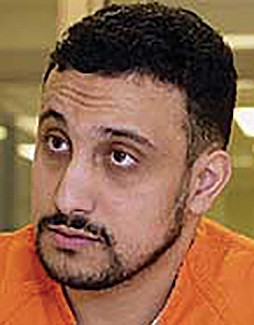
Bayoumi hosted another dinner party in spring 2000 at a Kurdish mosque in El Cajon where he introduced the terrorists to about 20 men, including Mohdar Abdullah. Abdullah, a San Diego State student at the time, is another controversial figure whom the FBI speculated may have had advanced knowledge of the attacks.
Abdullah, a Yemeni, denied knowing about the attacks in several interviews but admitted being a close friend of Hazmi. “It was a private introduction. I recall Bayoumi telling me, ‘These guys just came from Los Angeles.’ He told them if they needed any help they could ask me. Being a committed Muslim, it’s kind of a moral obligation to help your brothers who are in need. I reacted very normally. I said sure,” said Abdullah in a 2002 jailhouse interview. He was in the U.S. illegally and deported in 2004.
Bayoumi “indicated he drove [Hazmi and Mihdhar] from Los Angeles to San Diego,” said Abdullah. The 9/11 Commission said the terrorists were “possibly” driven to San Diego by Abdullah, but he has repeatedly denied that.
Bayoumi arrived in the United States in 1994 to study English at San Diego State. He claimed to be a student during the entire time he lived here. He told some that he was living off a stipend from his employer, Dallah/Avco Trans Arabia Co., who he said was paying him to study in the U.S. The business is an aviation services company with ties to the Saudi government. He told an apartment manager that he was receiving money from his family and others that he had a government scholarship. He told the Arab newspaper he was a social worker in San Diego.
Bayoumi first appeared on the FBI’s San Diego radar in 1998, when an apartment manager reported suspicious gatherings of Middle Eastern males in his apartment and a suspicious package mailed to him from overseas. Agents opened an inquiry that was closed the following year without action taken. Hazmi told a Saudi college student from La Mesa he believed Bayoumi was a spy and tailing Mihdhar and him when they crossed paths in the restaurant.
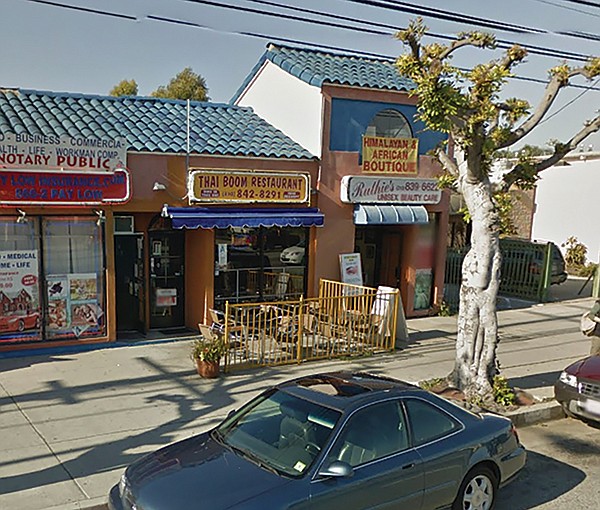
In a fall 2001 interview, the student related Hazmi’s account that Bayoumi walked by their table and pretended to drop a newspaper. He then began talking to Hazmi and Mihdhar in Arabic. The student was interviewed with a lawyer present and asked to remain anonymous.
In an October 2003 interview with the 9/11 Commission staff in Saudi Arabia, Bayoumi said that Hazmi’s “description of him as a Saudi spy hurt him very much.” The interview took place in the presence of an agent from the Mabahith, the secret police from the Saudi Ministry of the Interior. Bayoumi said that in the restaurant meeting Hazmi and Mihdhar said they wanted to move to San Diego after hearing his description of the local weather.

The La Mesa student said his uncle gave him some advice before he left for the U.S.; advice generated by Saudi paranoia that everyone is a government informant. The man who goes out of his way to help him in San Diego is the one to be wary of, he warned. The student said when he arrived at the Islamic Center in August 2000, asking for help in finding a place to rent, Bayoumi drove him to the house of Abdussattar Shaikh in Lemon Grove, where he lived for one month. Shaikh took in Muslim boarders and was Bayoumi’s friend. Shaikh said he was an educator and preferred to be called Dr. Shaikh. In 2000 he was a member of the San Diego Police Commission and an FBI informant.
Hazmi and Mihdhar rented rooms in Shaikh’s house after moving out of the Parkwood Apartments in May 2000. In an interview with 9/11 Commission staff, Shaikh said Bayoumi told him he had referred the hijackers to Shaikh’s home, but Shaikh disputed that. The FBI did not learn that the terrorists lived with one of the bureau’s informants until after the attacks.
Despite acknowledging his ties to Hazmi and Mihdhar to the 9/11 Commission and in an August 2003 interview with the FBI in Saudi Arabia, Bayoumi told the Arab newspaper he did not know the two terrorists and did not draw a cashier’s check in his name — for which he was reimbursed — to pay for their first month’s rent. He said he did not know where Hazmi and Mihdhar lived after moving from the apartment, despite telling Shaikh that he suggested they rent from him.
The FBI did not learn about Bayoumi’s association with the hijackers until September 13, 2001, when their names and photos were released. Local Muslims who recognized Hazmi and Mihdhar called the FBI and told agents about Bayoumi. A local religious leader interviewed in 2001 said FBI agents showed him a photo lineup on September 15. The only man he recognized was Bayoumi, and it was clear by the questions the FBI was asking that agents did not know where he was, said the imam.
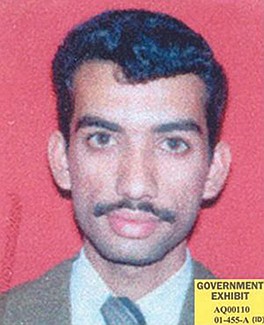
Two days later, attorney Randall Hamud and a client who knew Bayoumi and the hijackers met voluntarily with the FBI and gave them Bayoumi’s address in Birmingham, England, where he had moved. Hamud’s client told agents that he had agreed to have $5000 wired from the United Arab Emirates to his bank account for Hazmi, thinking he was doing a favor for a fellow Muslim. This information also gave the FBI its first lead that directed U.S. authorities to Ali Abdul Aziz Ali, an Al-Qaeda financier who wired money to the hijackers and made their travel arrangements.
“The FBI thanked us and promised that my client’s name would remain anonymous. Later, we discovered that our information probably enabled the FBI to identify and arrest the financier of the attacks,” said Hamud in a recent interview.

Ali is the nephew of Khalid Sheikh Mohammed, better known as KSM and the mastermind of the 9/11 attacks. Both men are at Guantanamo Bay.
On September 21, 2001, four days after Hamud’s client met with the FBI, New Scotland Yard detained Bayoumi at the FBI’s request and held him under the name Abu Imard for seven days. FBI agents were sent to England to question Bayoumi, said Gore.
After the attacks, several Middle-Eastern students who knew the hijackers in San Diego were arrested as material witnesses. By any measure, Bayoumi provided material support to Hazmi and Mihdhar — wittingly or unwittingly. The FBI’s failure to arrest him as a material witness strengthened suspicion in the Muslim community that he was a Saudi agent.
Gore, interviewed in his Kearny Mesa office, said the FBI did not arrest Bayoumi because “we just couldn’t come up with enough to tie him to 9/11 to get him arrested in Great Britain.”
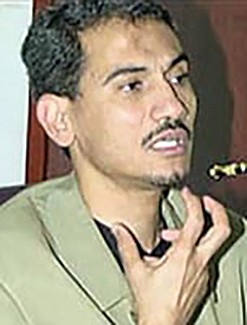
Osama Basnan, another Saudi who lived in the same apartment complex as Bayoumi, was mentioned prominently in the declassified report. Basnan (spelled “Bassnan” in the document) was a suspected Saudi agent and was known as the Saudi mayor of San Diego. He now lives in Saudi Arabia. An FBI report describes Basnan and Bayoumi as the closest of friends and notes there were about 700 phone calls made between the men’s phones in a one-year period. Their wives were also friends. However, in interviews with 9/11 Commission staff, Bayoumi said he did not like Basnan, and Basnan claimed not to know Bayoumi at all. Basnan was interviewed in the presence of three Mabahith agents.
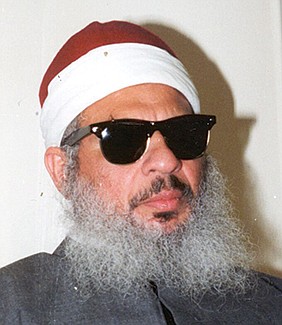
The 9/11 Commission investigator noted Basnan’s numerous contradictory statements and said Basnan had an “utter lack of credibility on virtually every material subject.” For example, it has been documented that in 1992 he hosted a party in Washington for Omar Abdel Rahman, known as “the Blind Sheikh” and spiritual leader of the terrorists who pulled off the 1993 World Trade Center bombings. Basnan claimed he was a victim of mistaken identity. The FBI and 9/11 Commission were unable to connect Basnan to Hazmi and Mihdhar, but the declassified document says he made laudatory comments about Osama bin Laden, speaking of him “as if he were a god” to an FBI informant.
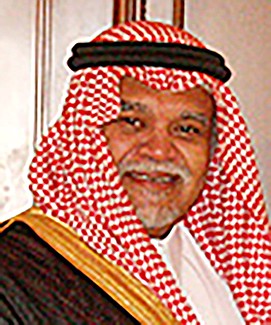
What is indisputable is that Basnan’s wife received $74,000 in monthly checks before the attacks from the wife of Prince Bandar, Saudi ambassador to the U.S. Basnan himself received a $15,000 check from Bandar. Basnan said the money was used to pay for medical services for his wife. FBI agents accounted for all of the money received by Basnan and his wife and none of it was used to help Hazmi and Mihdhar, said Gore. The couple was deported in 2002.
Gore said he is proud of the FBI investigation in San Diego but added that the full story of 9/11 may never be known. He is bothered by what the investigation did not uncover. He calls the unanswered questions mysteries and one is bigger than the others.
“The one that caused the greatest mystery that we would like to resolve — not knowing creates all these conspiracy theories — and that’s Omar al-Bayoumi. We know there was contact [with the terrorists] and he was gone before 9/11. We know he’s lied in certain interviews and public statements. It’s one of those things hanging out there. Although we weren’t able to prove it, I don’t think he was in any way directing or knew about 9/11. [But] you don’t like to have those loose ends. And that’s definitely a loose end,” he said.


Nearly 15 years after the 9/11 attacks, questions linger about a San Diego man’s ties to two Al-Qaeda terrorists he helped settle in Clairemont as his neighbors who went on to crash a hijacked plane into the Pentagon.
Omar al-Bayoumi met Nawaf al-Hazmi and Khalid al-Mihdhar under dubious circumstances in a Los Angeles restaurant. Three days later he helped them move into his apartment complex, though he later insisted they were strangers. Bayoumi, married with four children, did not work, yet he seemed not to want for money. He was 42 at the time and claimed to be a student. However, nobody knew where he went to school, and he always seemed to be hanging around the Islamic Center of San Diego on Balboa Avenue, next to the 805 freeway.

Bayoumi usually walked around with a video camera, recording people at the mosque and cultural events. Long before the attacks, local Muslims suspected Bayoumi was a Saudi spy who kept tabs on Saudis living in San Diego; a belief buttressed when his wallet with Saudi government credentials was found in the mosque’s sanctuary. His frequent contacts with the Saudi embassy in Washington and consulate in Los Angeles were also well known.
After the attacks, FBI agents had their own suspicion about Bayoumi: was he an advance man for Hazmi and Mihdhar? So, who is Bayoumi and what was his role in the September 11, 2001, attacks? These questions remain unanswered. The release of the so-called 28 pages by Congress on July 15 offer new tidbits about him that only add to the mystery.
He lived in San Diego on and off for about seven years before moving to England one month before the attacks and now lives in Saudi Arabia.
The newly released document makes up a chapter missing from the 838-page report issued in 2002 by the joint congressional inquiry into intelligence failures leading up to the attacks. The inquiry’s task was to gather information and was not an investigation. President George W. Bush ordered the pages classified on national security grounds. President Obama authorized their release.
Bush’s decision to keep the document secret fueled speculation about Saudi government involvement in the terrorist attacks. However, while it mentions the “substantial assistance” that Bayoumi gave to the hijackers, the pages contain no smoking gun. Follow-up investigations by the FBI and 9/11 Commission were unable to prove that the Saudi government or Saudi citizens named in the document had advanced knowledge of or knowingly assisted the hijackers. Fifteen of the 19 terrorists were Saudis.

Still, investigators uncovered several disturbing coincidences that leave skeptics wondering what the Saudis, including Bayoumi, knew. One 9/11 Commission member called the coincidences “an incredible series of circumstances” that, among other things, allowed Hazmi and Mihdhar to live here unobtrusively. Bayoumi’s association with Hazmi and Mihdhar has been analyzed extensively and remains hotly debated.
Chapter V in the 9/11 Review Commission report notes there is “ongoing internal debate within the FBI” over whether Bayoumi and others gave witting assistance to the hijackers. The review commission was created by Congress to check the FBI’s progress instituting the recommendations of the 9/11 Commission.

Officially, the 9/11 Commission and FBI concluded that the hijackers did not have a support network in the U.S. and any support given to them was unwitting. Both agencies concluded that Bayoumi did not knowingly assist the terrorists. If this is true, then his ties to Hazmi and Mihdhar are intertwined in a series of compelling coincidences.
“The documentary evidence that Bayoumi provided assistance to Hazmi and Mihdhar is solid,” said the declassified document. It notes that he had “far more extensive ties to the Saudi government than previously realized.” The document reported almost 100 phone calls from Bayoumi to Saudi government offices in the U.S. between January (when Hazmi and Mihdhar arrived in Los Angeles) and May 2000.
Before the terrorists arrived here, Bayoumi was getting $465 in monthly Saudi government allowances. In March 2000, one month after Hazmi and Mihdhar moved to Clairemont, his monthly stipend increased to $3700 and remained so until reduced to $3200 in December 2000, when Hazmi left San Diego. Federal investigators suspected that the increase in Bayoumi’s government allowance was intended to assist Hazmi and Mihdhar, but this suspicion was never proven.
Much of what was learned about the attacks was uncovered in San Diego. San Diego County sheriff Bill Gore, head of the local FBI office during 9/11, said, “We know more about [Hazmi and Mihdhar] in San Diego and what they did and where they went from the time they came into the U.S. to the time they flew into the Pentagon than any other hijackers.” But he also added “some things we’ll never know the answer to; one of them being Bayoumi.”
Former Senator Bob Graham (D-FL), co-chair of the joint congressional inquiry, said San Diego provided “the blood sample of 9/11.” “In our understanding of 9/11, San Diego was absolutely critical because we were able to gather so much information there. It was almost analogous to having a physical exam and they draw blood and use a small amount of that fluid to be properly analyzed,” said Graham in a telephone interview.

Bayoumi met Hazmi and Mihdhar on February 1, 2000. He claimed it was a random encounter at the Mediterranean Gourmet restaurant on Venice Boulevard in Los Angeles, and then he invited them to move to San Diego. On February 4 he was helping them apply for an apartment that was one door down from his at the Parkwood Apartments, off Balboa Avenue and a block west of the Islamic Center. Bayoumi told FBI agents in an August 2003 interview in Saudi Arabia that Hazmi and Mihdhar were the only ones he ever helped find an apartment.
The terrorists moved in without furniture. Because they did not have a credit history, Bayoumi co-signed for them and they were allowed to list his address as a previous residence. Bayoumi also helped them open a checking account and drew a cashier’s check for $1500 at a Bank of America on Balboa Avenue in his name to cover their first month’s rent; Bayoumi was promptly reimbursed.

On February 9, five days after the duo moved into the apartment, and again on February 14, Bayoumi’s cell phone was used to call the landlord of an apartment complex on 49th Street, off El Cajon Boulevard. On February 15 the landlord returned a page from Bayoumi’s phone and Hazmi answered. The terrorists complained that rent at the Parkwood was too high. They were looking for a cheaper place to live. (The Parkwood Apartments, at 6401 Mount Ada Road, have since been converted to condominiums and the complex given a new name.)
Graham said congressional investigators were lucky to learn about Bayoumi and the two hijackers before the Bush administration put a lid on the information. “And relative to the situation in San Diego, it was just our good fortune to get there before the cover-up [was] put in place,” said Graham, referring to the sealing of the 28 pages. When asked who ordered the cover-up, he said, “I think it came from the White House.”
Graham is skeptical of U.S. claims that there was no involvement by Saudi government officials in the attacks and that any help that Hazmi and Mihdhar received from local Muslims was unwitting. He told 60 Minutes he believes the terrorists received a substantial amount of support from a Saudi network, including in San Diego. However, the FBI has been unable to find any co-conspirators despite a nearly 15-year-long investigation.
In the telephone interview, Graham said the hijackers could not have succeeded without support from within the U.S. “I think it is highly implausible that these 19 people, most of whom didn’t speak English, had never been in the United States before, weren’t well educated, [alone] could have turned out such a sophisticated plot,” he said.
In one of the many contradictory findings in the investigations, the 9/11 Commission reached the same conclusion. The commission’s report said it was unlikely that Hazmi and Mihdhar “would have come to the U.S. without arranging to receive assistance from one or more individuals informed in advance of their arrival.” But the commission ultimately said investigators found no evidence the terrorists had willing accomplices while in San Diego. Mihdhar lived here four months and Hazmi ten.
Gore said FBI agents began the investigation on the supposition that the terrorists had a local cell supporting them. “That was the whole point of our investigation to see if that network existed. I didn’t see one crucial piece of aid or support that they got here in San Diego that they couldn’t have gotten some other way to further their plan,” he said.
Hazmi and Mihdhar were the first hijackers to settle in the United States, arriving in Los Angeles on January 15, 2000, 21 months before the attacks. They came to California after attending an Al-Qaeda summit in Malaysia. Present at the terrorist gathering in Malaysia was the mastermind of the USS Cole bombing on October 12, 2000, which killed 17 sailors, including one from San Diego. The CIA was aware of the meeting but did not inform the FBI at the time.
The CIA’s failure to notify the FBI quickly about Hazmi and Mihdhar still resonates with Gore and FBI officials. The FBI was faulted for missed opportunities to stop the attacks. Critics noted that Hazmi’s name was in the San Diego phone book. “If the CIA had passed it on in a more timely fashion it wouldn’t have taken a rocket scientist to find the hijackers,” said Gore. “But you can’t find somebody when you’re not looking for him and had no reason to look for him.”
In an October 2003 interview with the 9/11 Commission staff, Bayoumi said the restaurant meeting with Hazmi and Mihdhar in Los Angeles was unplanned and occurred after he stopped at the Saudi consulate, where he went with a non-Arabic-speaking friend. However, Graham doubts that the encounter was happenstance. Graham’s committee was unable to interview Bayoumi.
“There were 134 Middle Eastern restaurants in Los Angeles in January 2000. We asked a statistician to calculate the chance that two pairs of two would end up in the same restaurant at the same hour. As I recall it was something like three million to one the probability of that occurring,” said Graham. The FBI called the meeting suspicious, but officials said there is no evidence that Bayoumi planned the meeting or was directed by anyone at the consulate to meet with the terrorists. Authorities have not determined how Hazmi and Mihdhar, who did not have a car then, got to San Diego from Los Angeles.
A student who met Bayoumi at the Islamic Center said in a 2001 interview that he used to accompany Bayoumi to meetings at the consulate. He recalled Bayoumi telling him in early 2000 that he had to go to Los Angeles to meet some important people who were moving to San Diego but did not invite him. Bayoumi did not say who they were.
The student, who left the U.S. in 2005, said Bayoumi was a father figure who gave him advice about sex and other matters. The two would attend mosque together and frequently drive to Las Vegas to eat and enjoy a stage show. Bayoumi also helped him get a cell phone.
“I found him to be a very wise man who loved poetry. He was a poet who liked to recite love poems. I know people were suspicious of him; thought he was a spy. But I never saw anything unusual in his behavior,” he said in 2001. Fifteen years later he remains loyal to his friend.
“I have no doubt that Bayoumi had no negative involvement (at least intentionally) in any wrong doing during his stay in SD. I hope the documents [28 pages] reveals so, otherwise, I would sincerely regret the day I have know [sic] him,” he said in a recent email. In a later email he opined that the declassified document cleared Bayoumi of charges that he was a Saudi agent and had ties to the terrorist attacks.
About four days after the terrorists moved into their new apartment, Bayoumi organized a dinner party in their home to introduce them to the community. A former Islamic Center administrator who attended the party and had almost daily contact with Bayoumi said it was the only time Bayoumi threw a party for newcomers.
In a December 2002 interview with an Arab newspaper, Bayoumi denied arranging the February 2000 party; instead, he said it was a traditional Ramadan dinner that Hazmi and Mihdhar arranged. However, Ramadan, a monthlong religious observance, ended on December 28 in 2000. The preceding Ramadan began in December 1999 and ended on January 8, 2000, a week before the terrorists’ arrival in Los Angeles.

Bayoumi hosted another dinner party in spring 2000 at a Kurdish mosque in El Cajon where he introduced the terrorists to about 20 men, including Mohdar Abdullah. Abdullah, a San Diego State student at the time, is another controversial figure whom the FBI speculated may have had advanced knowledge of the attacks.
Abdullah, a Yemeni, denied knowing about the attacks in several interviews but admitted being a close friend of Hazmi. “It was a private introduction. I recall Bayoumi telling me, ‘These guys just came from Los Angeles.’ He told them if they needed any help they could ask me. Being a committed Muslim, it’s kind of a moral obligation to help your brothers who are in need. I reacted very normally. I said sure,” said Abdullah in a 2002 jailhouse interview. He was in the U.S. illegally and deported in 2004.
Bayoumi “indicated he drove [Hazmi and Mihdhar] from Los Angeles to San Diego,” said Abdullah. The 9/11 Commission said the terrorists were “possibly” driven to San Diego by Abdullah, but he has repeatedly denied that.
Bayoumi arrived in the United States in 1994 to study English at San Diego State. He claimed to be a student during the entire time he lived here. He told some that he was living off a stipend from his employer, Dallah/Avco Trans Arabia Co., who he said was paying him to study in the U.S. The business is an aviation services company with ties to the Saudi government. He told an apartment manager that he was receiving money from his family and others that he had a government scholarship. He told the Arab newspaper he was a social worker in San Diego.
Bayoumi first appeared on the FBI’s San Diego radar in 1998, when an apartment manager reported suspicious gatherings of Middle Eastern males in his apartment and a suspicious package mailed to him from overseas. Agents opened an inquiry that was closed the following year without action taken. Hazmi told a Saudi college student from La Mesa he believed Bayoumi was a spy and tailing Mihdhar and him when they crossed paths in the restaurant.

In a fall 2001 interview, the student related Hazmi’s account that Bayoumi walked by their table and pretended to drop a newspaper. He then began talking to Hazmi and Mihdhar in Arabic. The student was interviewed with a lawyer present and asked to remain anonymous.
In an October 2003 interview with the 9/11 Commission staff in Saudi Arabia, Bayoumi said that Hazmi’s “description of him as a Saudi spy hurt him very much.” The interview took place in the presence of an agent from the Mabahith, the secret police from the Saudi Ministry of the Interior. Bayoumi said that in the restaurant meeting Hazmi and Mihdhar said they wanted to move to San Diego after hearing his description of the local weather.

The La Mesa student said his uncle gave him some advice before he left for the U.S.; advice generated by Saudi paranoia that everyone is a government informant. The man who goes out of his way to help him in San Diego is the one to be wary of, he warned. The student said when he arrived at the Islamic Center in August 2000, asking for help in finding a place to rent, Bayoumi drove him to the house of Abdussattar Shaikh in Lemon Grove, where he lived for one month. Shaikh took in Muslim boarders and was Bayoumi’s friend. Shaikh said he was an educator and preferred to be called Dr. Shaikh. In 2000 he was a member of the San Diego Police Commission and an FBI informant.
Hazmi and Mihdhar rented rooms in Shaikh’s house after moving out of the Parkwood Apartments in May 2000. In an interview with 9/11 Commission staff, Shaikh said Bayoumi told him he had referred the hijackers to Shaikh’s home, but Shaikh disputed that. The FBI did not learn that the terrorists lived with one of the bureau’s informants until after the attacks.
Despite acknowledging his ties to Hazmi and Mihdhar to the 9/11 Commission and in an August 2003 interview with the FBI in Saudi Arabia, Bayoumi told the Arab newspaper he did not know the two terrorists and did not draw a cashier’s check in his name — for which he was reimbursed — to pay for their first month’s rent. He said he did not know where Hazmi and Mihdhar lived after moving from the apartment, despite telling Shaikh that he suggested they rent from him.
The FBI did not learn about Bayoumi’s association with the hijackers until September 13, 2001, when their names and photos were released. Local Muslims who recognized Hazmi and Mihdhar called the FBI and told agents about Bayoumi. A local religious leader interviewed in 2001 said FBI agents showed him a photo lineup on September 15. The only man he recognized was Bayoumi, and it was clear by the questions the FBI was asking that agents did not know where he was, said the imam.

Two days later, attorney Randall Hamud and a client who knew Bayoumi and the hijackers met voluntarily with the FBI and gave them Bayoumi’s address in Birmingham, England, where he had moved. Hamud’s client told agents that he had agreed to have $5000 wired from the United Arab Emirates to his bank account for Hazmi, thinking he was doing a favor for a fellow Muslim. This information also gave the FBI its first lead that directed U.S. authorities to Ali Abdul Aziz Ali, an Al-Qaeda financier who wired money to the hijackers and made their travel arrangements.
“The FBI thanked us and promised that my client’s name would remain anonymous. Later, we discovered that our information probably enabled the FBI to identify and arrest the financier of the attacks,” said Hamud in a recent interview.

Ali is the nephew of Khalid Sheikh Mohammed, better known as KSM and the mastermind of the 9/11 attacks. Both men are at Guantanamo Bay.
On September 21, 2001, four days after Hamud’s client met with the FBI, New Scotland Yard detained Bayoumi at the FBI’s request and held him under the name Abu Imard for seven days. FBI agents were sent to England to question Bayoumi, said Gore.
After the attacks, several Middle-Eastern students who knew the hijackers in San Diego were arrested as material witnesses. By any measure, Bayoumi provided material support to Hazmi and Mihdhar — wittingly or unwittingly. The FBI’s failure to arrest him as a material witness strengthened suspicion in the Muslim community that he was a Saudi agent.
Gore, interviewed in his Kearny Mesa office, said the FBI did not arrest Bayoumi because “we just couldn’t come up with enough to tie him to 9/11 to get him arrested in Great Britain.”

Osama Basnan, another Saudi who lived in the same apartment complex as Bayoumi, was mentioned prominently in the declassified report. Basnan (spelled “Bassnan” in the document) was a suspected Saudi agent and was known as the Saudi mayor of San Diego. He now lives in Saudi Arabia. An FBI report describes Basnan and Bayoumi as the closest of friends and notes there were about 700 phone calls made between the men’s phones in a one-year period. Their wives were also friends. However, in interviews with 9/11 Commission staff, Bayoumi said he did not like Basnan, and Basnan claimed not to know Bayoumi at all. Basnan was interviewed in the presence of three Mabahith agents.

The 9/11 Commission investigator noted Basnan’s numerous contradictory statements and said Basnan had an “utter lack of credibility on virtually every material subject.” For example, it has been documented that in 1992 he hosted a party in Washington for Omar Abdel Rahman, known as “the Blind Sheikh” and spiritual leader of the terrorists who pulled off the 1993 World Trade Center bombings. Basnan claimed he was a victim of mistaken identity. The FBI and 9/11 Commission were unable to connect Basnan to Hazmi and Mihdhar, but the declassified document says he made laudatory comments about Osama bin Laden, speaking of him “as if he were a god” to an FBI informant.

What is indisputable is that Basnan’s wife received $74,000 in monthly checks before the attacks from the wife of Prince Bandar, Saudi ambassador to the U.S. Basnan himself received a $15,000 check from Bandar. Basnan said the money was used to pay for medical services for his wife. FBI agents accounted for all of the money received by Basnan and his wife and none of it was used to help Hazmi and Mihdhar, said Gore. The couple was deported in 2002.
Gore said he is proud of the FBI investigation in San Diego but added that the full story of 9/11 may never be known. He is bothered by what the investigation did not uncover. He calls the unanswered questions mysteries and one is bigger than the others.
“The one that caused the greatest mystery that we would like to resolve — not knowing creates all these conspiracy theories — and that’s Omar al-Bayoumi. We know there was contact [with the terrorists] and he was gone before 9/11. We know he’s lied in certain interviews and public statements. It’s one of those things hanging out there. Although we weren’t able to prove it, I don’t think he was in any way directing or knew about 9/11. [But] you don’t like to have those loose ends. And that’s definitely a loose end,” he said.
Comments